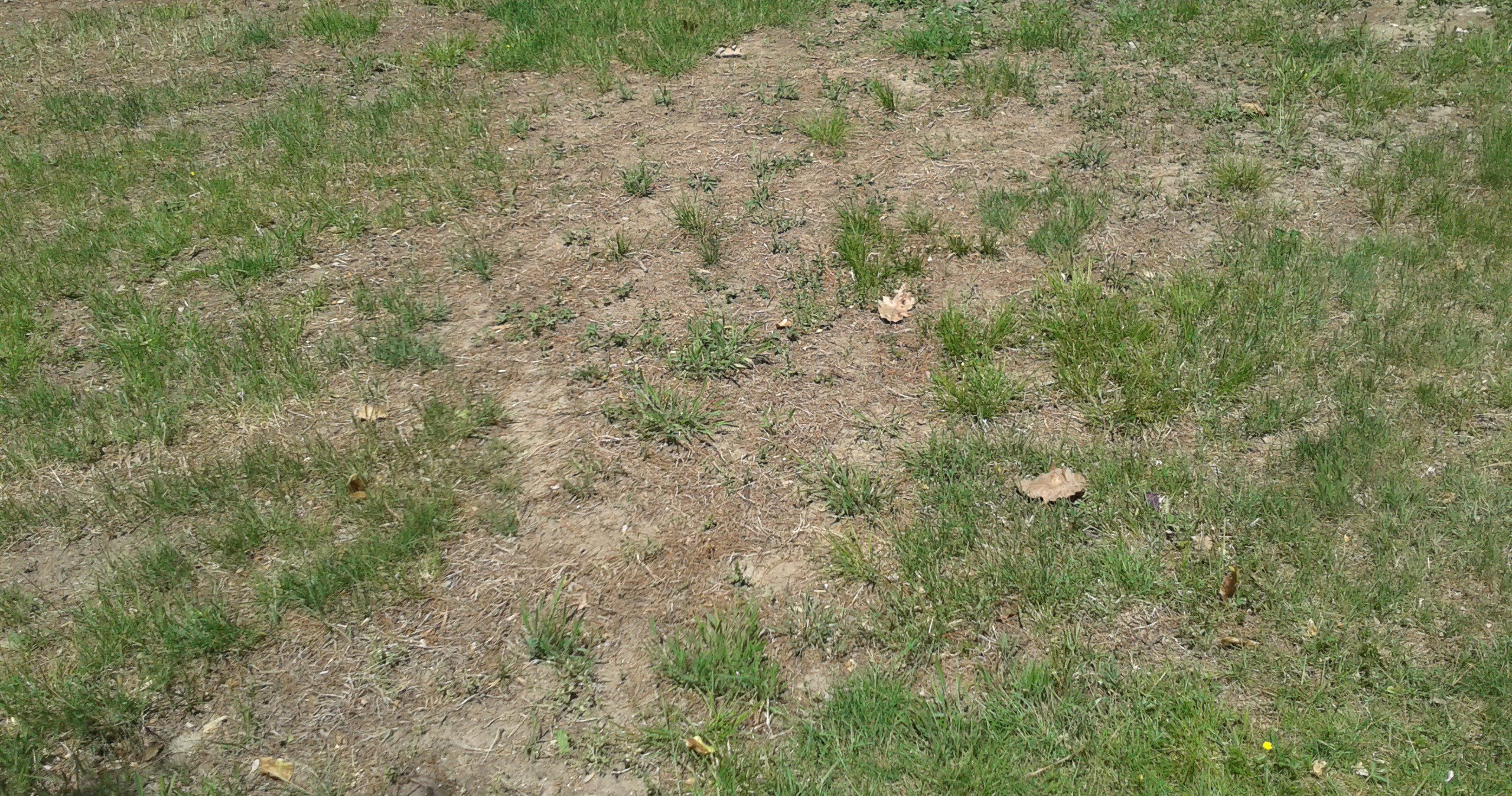Many lawns in our area are suffering this spring due to the late leaf drop and early snow last fall. Matted leaves were exposed once the snow melted this spring and the result is suffocated, dead lawns. If your lawn is suffering from unsightly bare spots, follow our tips below to get your lawn looking its absolute best!
Timing:
The best time to seed a lawn in Mid-Michigan is mid-August through September, while the soil is still warm from the summer sun. The warm soil mixed with cool, dewy evenings is the perfect condition for seed to germinate. However, if you do not want to wait until the end of summer to get that lawn you have always wanted, the second best time to seed is in the spring, once the ground temperature has reached approximately 52-55 degrees. One thing to consider, seeding in the spring tends to result in a weedier lawn, weed growth is active in spring and without being able to apply pre-emergent to your new seedlings, weed growth can be rampant. Seeding in the fall when weed growth has slowed results in a healthier, weed-free lawn.
Diagnose:
Knowing what has caused bare patches in your lawn is essential in getting that gorgeous lawn you desire. Prior to seeding, ensure that fungi, grubs or other pests are not the cause of your bare patches. If fungi or pests are the cause of bare patches in your lawn then you need to address those issues first, once resolved it will be time to seed.
Prep Work:
To prep your bare patches for seed, first you will need to use a spade to dig approximately 4-6″ into the dirt to loosen the soil and break up clumps. Once that is done you will want to mix in quality topsoil, doing this will improve the soil quality and give the seeds a healthier start. Once you have mixed the soil and dirt together tamp the area down so it is level with the rest of the lawn.
Seeding:
Once you have prepped the bare patches in your lawn you are ready to apply your seed. Spread your grass seed in a thin layer, you may choose to mix your seed with fertilizer before spreading (do not use a fertilizer with pre-emergent, this will prevent your seed from germinating). Also available is seed premixed with fertilizer and mulch. Once you have spread your seed be sure to water the area well.
Caring for Your New Seed/Lawn:
Once seeded, be sure to water the area well once or twice daily. Keep the area moist but not drenched, avoid puddling water. Once the new grass is well established, fertilizer can be applied with your regular applications. When your new grass is approximately 1/3 higher than your normal mowing height you can include the area with your regular mowing schedule.
Click here for a free estimate!


This advice is exactly what I needed. I have an error of my lawn that needs re-seeding and didn’t know how. Right now, it is making the rest of my lawn look bad. Thank you for the advice! Christie Busch
Christie,
You are so welcome! We’re glad we were able to help you!
This will definitely help this year. I have had a plan on fixing some spots that have gone bald. That or I’ll hire a lawn guy to help. Either way, thanks for the article.
Chris @ SDL Pool Cleaning